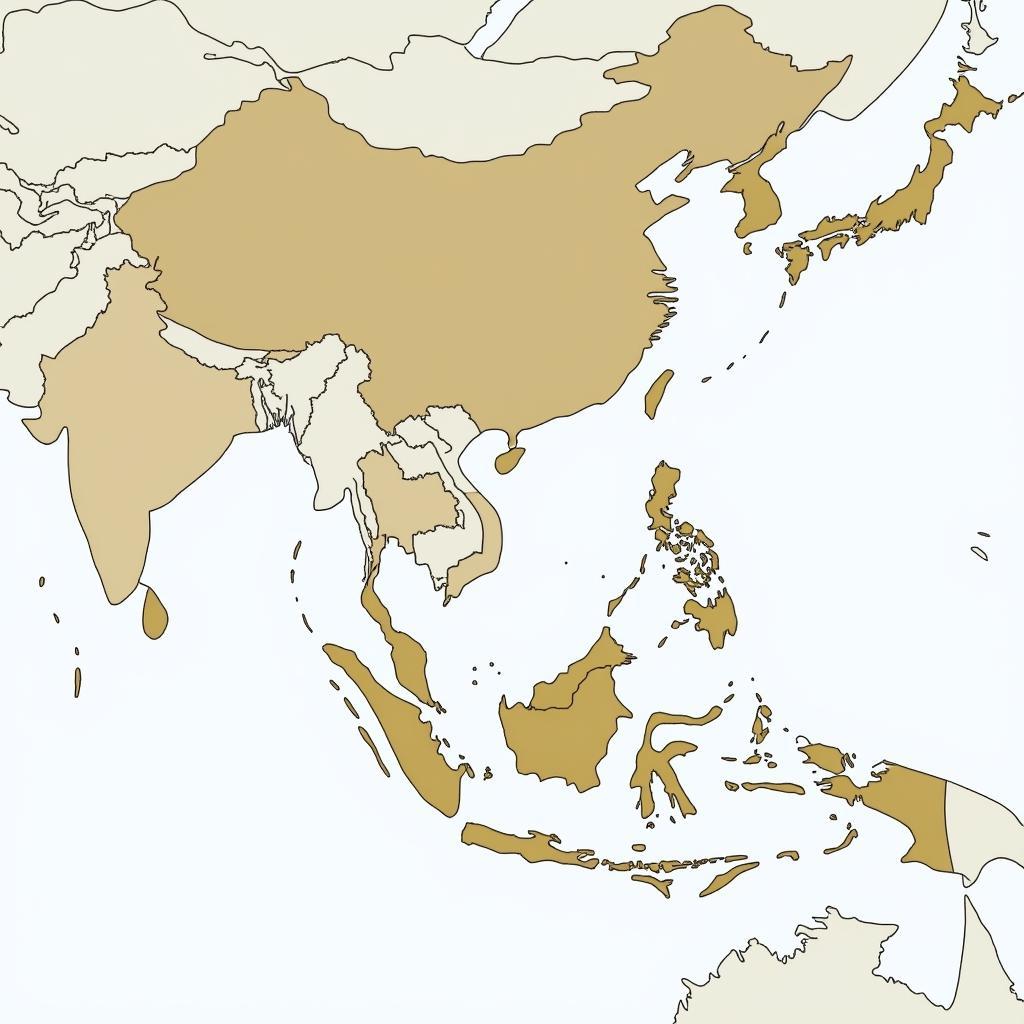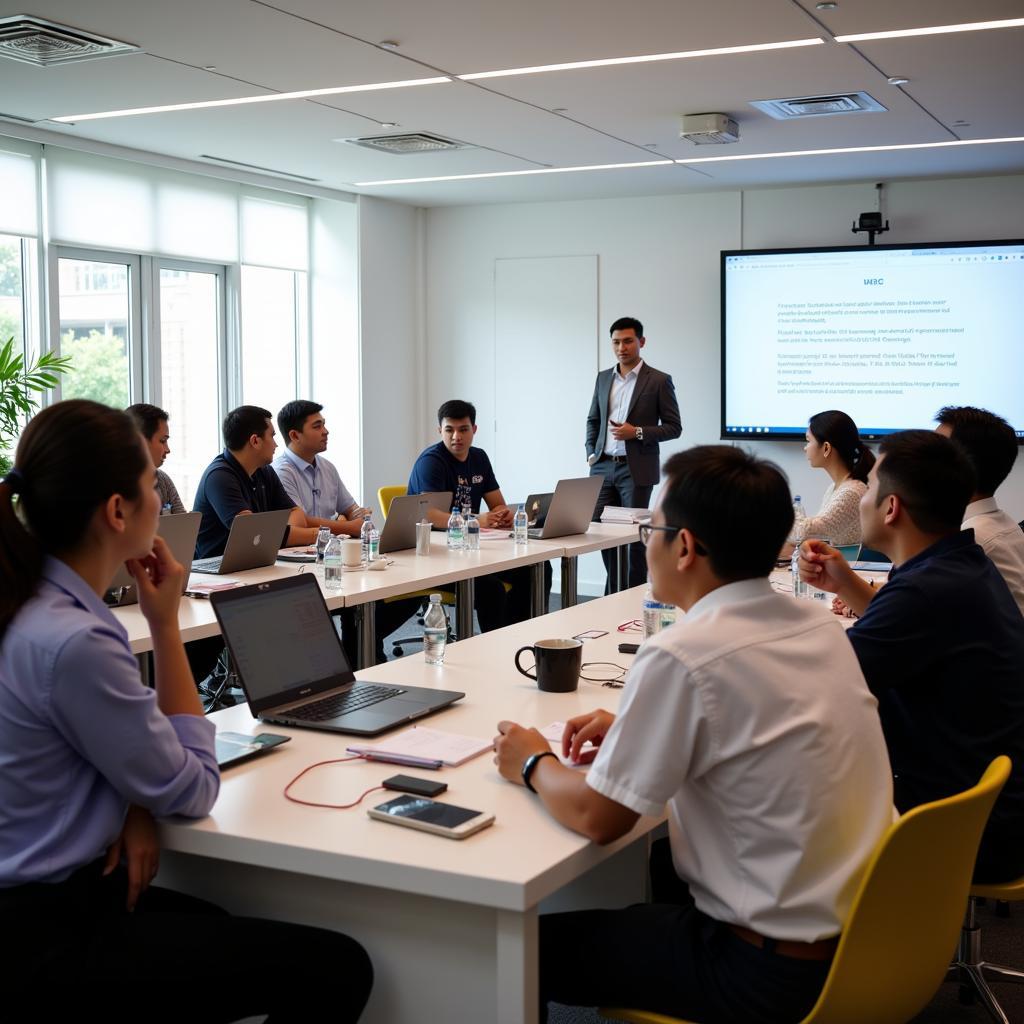“Ano Ang Asean Regional Forum,” Tagalog for “What is the ASEAN Regional Forum,” is a question that unlocks a key understanding of regional diplomacy and security cooperation in Southeast Asia. The ASEAN Regional Forum (ARF) is a critical platform for dialogue and consultation on political and security issues facing the Asia-Pacific region. It plays a vital role in fostering trust and preventing conflict among its diverse members. This article delves into the ARF’s history, purpose, mechanisms, and significance in maintaining peace and stability.
The ARF, established in 1994, evolved from the desire to address the evolving security landscape in the post-Cold War era. With the ASEAN states at its core, the forum aimed to build upon existing dialogue mechanisms and create a more inclusive platform for discussing regional security challenges. The initial focus was on confidence-building measures (CBMs) and preventive diplomacy, reflecting a cautious approach to sensitive security issues. As you explore the topic of “ano ang ASEAN Regional Forum,” you’ll uncover its unique approach to fostering dialogue and cooperation. The ARF’s inclusive nature has been vital to its success, allowing for open communication between countries with sometimes vastly different political and economic systems. See ASE India for more information.
The Evolution of the ARF’s Mandate
Over the years, the ARF’s mandate has expanded beyond CBMs to encompass a broader range of security issues. This includes transnational crime, maritime security, non-proliferation, and counter-terrorism. The forum’s growing scope reflects the increasing interconnectedness of security challenges in the region. The ARF’s ability to adapt to these evolving threats underscores its relevance and resilience. The ARF has played a significant role in managing regional tensions and promoting peaceful resolutions to disputes. It provides a space for countries to engage in constructive dialogue and build trust, even when bilateral relations are strained. The ARF’s emphasis on consensus-building and inclusivity has contributed to its longevity and effectiveness. You can find further insights on ASEAN collaborations at ASEAN Australia JCC.
 Map of ASEAN Regional Forum Members
Map of ASEAN Regional Forum Members
Key Mechanisms and Principles of the ARF
The ARF operates on several key principles, including consensus-building, non-interference in internal affairs, and respect for sovereignty. These principles are fundamental to maintaining the forum’s inclusivity and effectiveness. The ARF’s decision-making process relies on consensus, ensuring that all members have a voice and that decisions reflect the collective will of the forum. Check out What is an ASE for additional information on ASEAN-related initiatives.
Confidence-Building Measures and Preventive Diplomacy
Confidence-building measures remain a core element of the ARF’s work. These measures aim to enhance transparency, reduce misunderstandings, and promote greater trust among member states. Examples of CBMs include information sharing, military exercises, and expert dialogues on specific security issues. Preventive diplomacy plays a crucial role in preventing disputes from escalating into conflict. The ARF provides a platform for member states to engage in early warning and conflict prevention efforts.
Addressing Emerging Security Challenges
The ARF has increasingly focused on addressing emerging security challenges, such as cyber security, climate change, and pandemics. These issues transcend national borders and require regional cooperation to effectively address them. The ARF’s flexible structure and inclusive membership allow it to adapt to these new challenges and develop appropriate responses. You might find relevant information on past ARF meetings at 2010 ASEAN Regional Forum Clinton.
 ASEAN Regional Forum Dialogue Session
ASEAN Regional Forum Dialogue Session
The Significance of the ARF in the Regional Security Architecture
The ARF occupies a unique position within the regional security architecture. It serves as the primary forum for dialogue on political and security issues among a diverse group of countries, including major powers and smaller states. The ARF’s inclusive nature allows for a broader exchange of views and perspectives than would be possible in smaller, more exclusive groupings. The ARF complements other regional mechanisms, such as the ASEAN Defence Ministers’ Meeting (ADMM-Plus), by providing a broader platform for political and security dialogue.
 Future Challenges for the ASEAN Regional Forum
Future Challenges for the ASEAN Regional Forum
The forum has proven to be a valuable instrument for managing regional tensions and preventing conflict. By fostering dialogue and promoting understanding, the ARF contributes to a more stable and secure environment in the Asia-Pacific. “Ano ang ASEAN Regional Forum?” – It’s a crucial piece of the regional security puzzle, promoting dialogue, cooperation, and stability in a dynamic and complex geopolitical landscape. The ARF remains an essential platform for managing regional security challenges and building a more peaceful future for the Asia-Pacific.
Conclusion
Understanding “ano ang ASEAN Regional Forum” is essential for comprehending the intricacies of regional security in Southeast Asia. The ARF stands as a testament to the power of multilateral dialogue and cooperation in addressing complex security challenges. By fostering trust and understanding among its diverse members, the ARF plays a critical role in maintaining peace and stability in the Asia-Pacific region. The forum’s ability to adapt to evolving threats and its commitment to inclusivity ensure its continued relevance in the years to come.
FAQ
- What is the main purpose of the ARF?
- To foster dialogue and cooperation on political and security issues in the Asia-Pacific.
- When was the ARF established?
- 1994
- Who are the members of the ARF?
- ASEAN member states plus 17 other dialogue partners, including major powers like the US, China, and Russia.
- What are the key principles of the ARF?
- Consensus-building, non-interference, and respect for sovereignty.
- What is the role of CBMs in the ARF?
- To enhance transparency, reduce misunderstandings, and promote trust among member states.
- How does the ARF address emerging security challenges?
- By adapting its agenda and engaging in discussions on issues like cyber security, climate change, and pandemics.
- Why is the ARF important for regional security?
- It provides a crucial platform for dialogue and cooperation among a diverse group of countries, promoting peace and stability.
See also: ASE June 2022
For further assistance, contact us:
Phone: 0369020373
Email: [email protected]
Address: Thon Ngoc Lien, Hiep Hoa, Bac Giang, Vietnam. We have a 24/7 customer support team.

